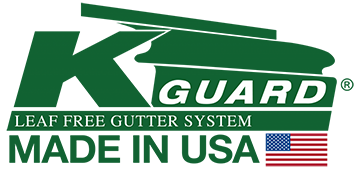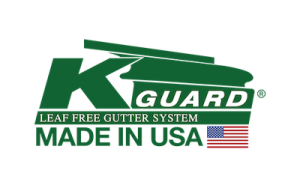Soffits and fascia boards are important to your home for many reasons. One, they help make it look great and can truly help complement the overall decor of your home’s exterior. Two, they help enclose the home from the outside — keeping pests and any weather at bay. They can also help increase ventilation into your attic, which can help increase its energy efficiency. And three, in certain areas of your home, your gutters are installed onto the fascia boards, providing key support for this important system.
However, fascia and soffit boards have to be replaced from time to time. Replacement often comes after noticeable damage has been discovered. Another time when it makes sense to perform fascia and soffit board replacement is if you’re getting new gutters.
In this post, we’ll further discuss the importance of fascia and soffit boards, why they matter to gutter installation and more. Here’s a closer look:
Fascia Board, Soffit Build-Out: A Key Part of Gutter Installation
Like we noted in the opening, gutters install into the fascia boards on your home — so these boards have to be in good condition in order to support the weight of the gutters. Even if your fascia boards are in good condition, it can still make sense to have them replaced when you’re getting new gutters to match any new color or design scheme that you’re aiming for.
The soffits are installed underneath the rafter tails of your home. Depending on the current condition of your soffits, the ventilation in your home and any problems your existing soffits may be causing in your property, it often makes sense to have the soffits replaced and built out at the same time you’re having the fascia board work performed.
Cost of Soffit and Fascia Build Out
The cost of any home improvement project depends on a variety of factors, and soffit and fascia board build-outs are no exception. On average, it costs anywhere from $20 to $30 per linear foot of soffit installed, but costs can vary based on material. Fascia boards generally cost anywhere from $15 to $25 per linear foot that is installed. Again, the cost can vary based on material.
Traditionally, soffits and fascia boards are made from the likes of aluminum and wood. However, there is a range of material options that property owners can select from for these build-outs today. Some of the more popular options today include vinyl and UPVC.
When to Replace Soffit and Fascia Boards
So how do you know when to replace soffit and fascia boards? Like we said in the introduction, sometimes it makes sense based on any other significant projects you’re carrying out around the home.
For instance, if you’re getting new gutters, it might make sense to look at replacing at least the fascia boards to match the color or style of your new gutters. If you’re having new siding installed on your home, replacing the soffit and fascia boards is typically part of the service that’s included in such work.
But there are other situations where it makes sense to replace your soffits and fascia boards outside of the aforementioned situations. Here’s a look at the situations you should note:
- If they incur damage: Mold, mildew and other stains can typically be easily cleaned off with a little bit of cleaning solution or elbow grease, but if you notice rusting or areas where the soffit is peeling away from the property or completely missing, repairs or replacement should become a priority.
- If your soffits and/or fascia are made of wood, you’ll want to replace them if rot is noticeable.
- If you have a pest infestation in your attic, it’s likely that the soffits and/or fascia were not installed correctly or have been damaged to the point where pests can invade.
- If there’s mold growth in your attic, it’s a sign that your soffits likely aren’t doing a good enough job ventilating to the attic. While professional remediation is likely necessary, it’s also important to take the necessary measures to ensure the mold doesn’t come back. Replacing the fascia to improve attic ventilation can help.
- Chipped or cracked paint is a sign of old fascia and soffit age. The older these building materials get, the more prone they are to fail.
Can I Replace Soffits or Fascia?
Often, it makes sense to let a professional handle replacement or new build-outs, simply because they’re often already at your home to replace the gutters or add new siding. Additionally, installing soffits or fascia incorrectly can lead to significant problems, such as home water damage, mold growth or a pest infestation. However, if you’re handy, don’t mind heights and have the proper materials, it is possible to carry out this work yourself.
For more information on fascia board and soffit board replacement, contact K-Guard today.

